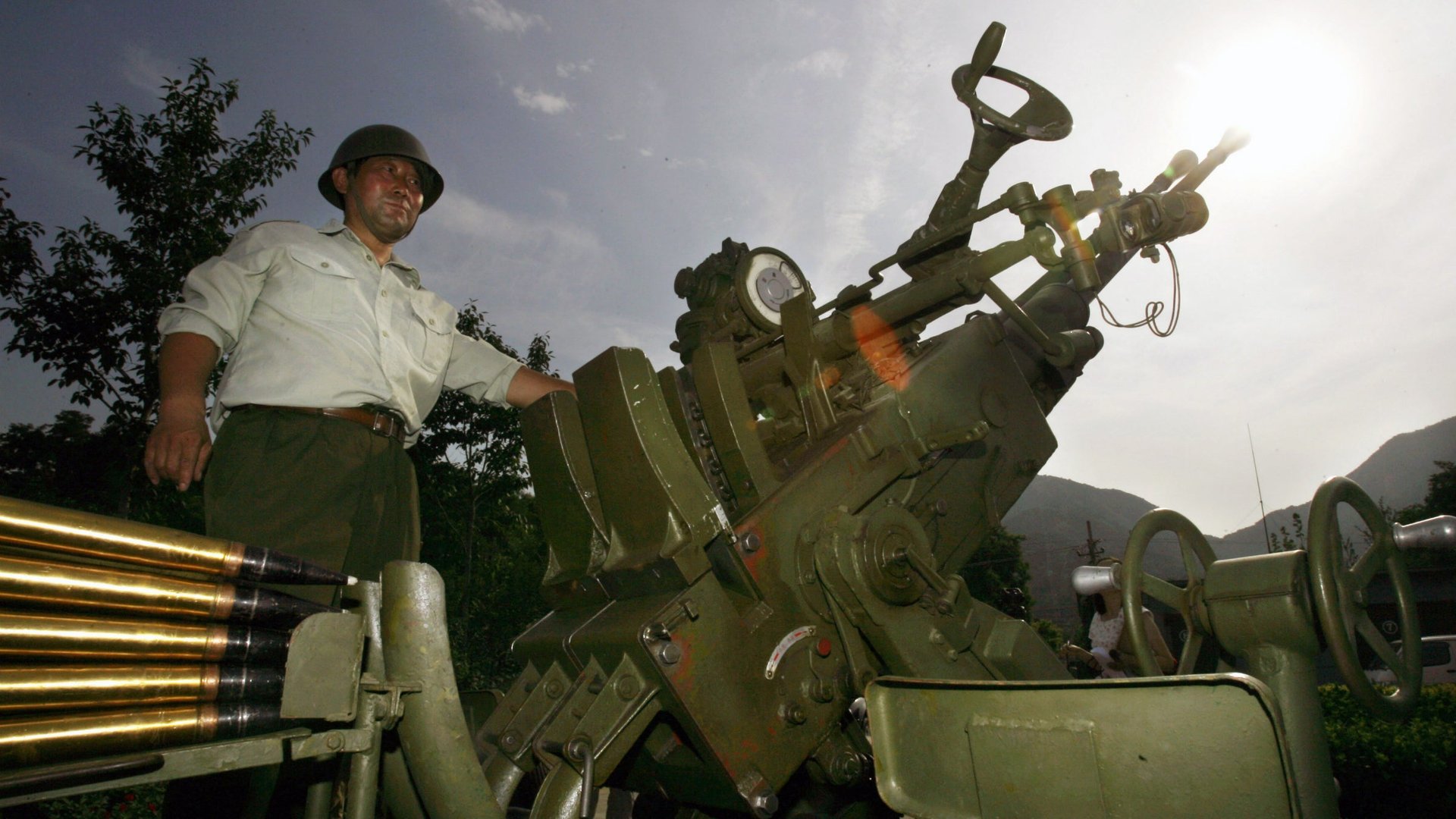China creates 55 billion tons of artificial rain a year—and it plans to quintuple that
Back in 2150 BC, Emperor Yu sealed his place in China’s history of eminent rulers by controlling the Yellow River’s annual flood, saving waterlogged crops. Today China’s rulers face the opposite problem: It’s water scarcity that threatens farms. So instead of the Yellow River, the Chinese government is controlling the rain.


Back in 2150 BC, Emperor Yu sealed his place in China’s history of eminent rulers by controlling the Yellow River’s annual flood, saving waterlogged crops. Today China’s rulers face the opposite problem: It’s water scarcity that threatens farms. So instead of the Yellow River, the Chinese government is controlling the rain.
It does that by “cloud-seeding,” the colloquial term for rocket-launching chemicals into clouds, accelerating the creation of ice crystals that eventually become rain (China uses military aircraft too). This meteorological enema isn’t just handy for combating the country’s increasingly severe droughts and, supposedly, preventing hail. Local governments use “weather modification” to clear away lingering billows of air pollution.
China’s come a long way since 1958, when Russia brought cloud-seeding to the Middle Kingdom. It’s now the most trigger-happy cloud-seeder in the world. In 2011, China spent $150 million on a single regional artificial rain program; it’s unclear how much other local governments spend. The US, by comparison, spends around $15 million a year. It now creates 50 billion tonnes (55 billion tons) of artificial rain a year. That compares with an average of 36 billion tonnes a year (40 billion tons) from 1999 to 2006.
As water grows scarcer and air pollution more severe, China plans to seed even more clouds. The State Council, China’s cabinet, is now mulling a proposal to beef up natural disaster monitoring and response measures, including more fake rain (links in Chinese). Last year, the head of the China Meteorological Administration (CMA) revealed that under its new “weather modification program” it would use cloud-seeding to boost precipitation by 254 billion tonnes (280 billion tons).
With its horrendous air pollution and acute water shortage, China is a natural contender to be the world’s leading cloud-seeder. But another reason is that few countries share its enthusiasm for the technique. For one, its effectiveness has never been well established. Put simply, it’s hard to tell if those 55 billion tons of artificial rain would have fallen anyway.
“[The Chinese government has] made some claims but there is no evaluation available that can substantiate their claims,” Roelof Bruintjes, a scientist at the US National Center for Atmospheric Research and a proponent of weather modification, told China Dialogue. He adds that the technology shouldn’t be used as “a drought-busting tool” but rather for long-term water management.
If the technique does work, that could actually cause other problems. Some say prematurely inducing rain prevents it from falling elsewhere. Also, cloud-seeding probably makes hail expand, not shrink, and pollution already seeds clouds automatically.
If cloud-seeding is possibly futile and destructive, why is China ramping up? Aside from environmental concerns, there are lucrative reasons to cloud-seed. The CMA has plans to seed clouds for private enterprises like farms or hydropower stations, Zheng Guoguang, the head of the CMA, told the China Daily in 2012. A Beijing meteorologist described China’s motivations to Vanity Fair at a weather-modification banquet in 2008 as follows: “People believe what they will, and governments must be seen to take action.”